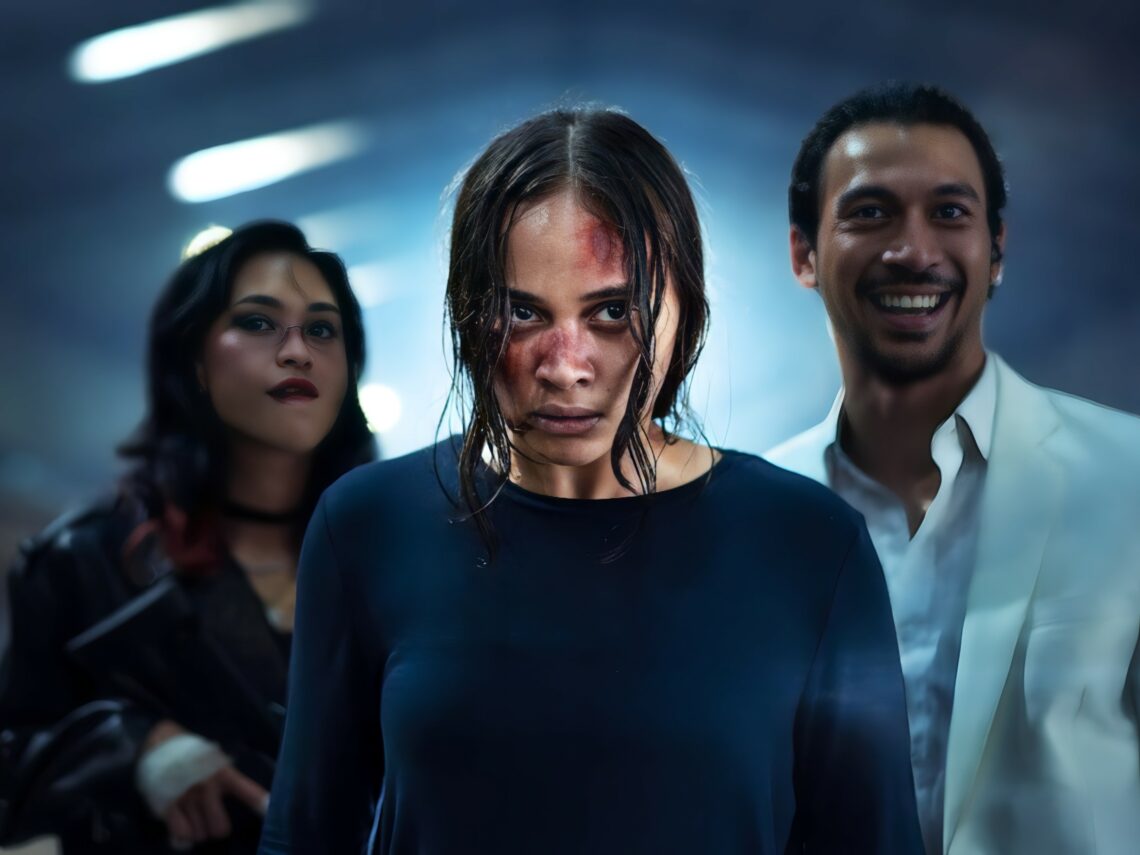
‘The Shadow Strays’: the Indonesian action thriller that’s become a new brutal benchmark
When Netflix introduced The Shadow Strays, an explosively violent Indonesian action thriller that almost defies comprehension, they may not have realised how well-received the movie would be. Yet, director Timo Tjahjanto and star Aurora Ribero deliver a cinematic tour de force. Instead of succumbing to a predictable barrage of bullets, decapitations, severed limbs, car crashes, and fiery mayhem, the film soars on exceptional craftsmanship and electrifying performances. In fact, The Shadow Strays could very well outshine The Raid and John Wick, rendering them mere preludes by comparison.
At first glance, The Shadow Strays plays like a comic book or Manga adaptation, even though it’s actually an original script written by Tjahjanto. It follows 13, a teenage assassin raised by an underground network of secret assassins known as the “Shadows”. When she befriends a young boy in her native Jakarta, and the local criminal element kidnaps him, she disobeys orders from her secretive employers to remain neutral. 13 embarks on a rip-roaring mission to rescue the boy, which unleashes hell in her direction from gangsters, corrupt politicians, and the Shadows.
The film’s visuals are heavily stylised, as is the fast-paced action. The Shadows wear tactical gear and masks that make them look like Snake Eyes from GI Joe, and the movie opens with a barnstorming sequence in Japan with 13 and her mentor Umbra slicing and dicing their way through a Yakuza stronghold.
The thing that elevates The Shadow Strays above other similarly ultraviolent martial arts-themed shoot ’em ups, though, is the very thing that will be its most controversial element. The level of violence in this movie won’t be for everyone because it is relentless, bloody, and wince-inducingly hard-hitting. Even though Tjahjanto sets up a heightened world for the film, he never shies away from depicting what violence actually does to a human body. In the world of The Shadow Strays, violence has consequences. Indeed, Tjahjanto pushes the level of gore into horror movie territory because that’s what would actually happen in real life if highly-trained fighters hacked at each other with swords and blasted each other with machine guns.
Fascinatingly, Tjahjanto doesn’t see himself as an excessively gory director, despite his films regularly featuring more blood than the vampire rave at the beginning of Blade. To him, it’s all about tone and what he’s trying to say with his violence; it’s not just in his films for the sake of it. He told Polygon: “There needs to be a certain – weirdly enough – respect for violence and what it can do to the human body. I feel like we have to, in some way, hold ourselves accountable as filmmakers to show just how traumatising violence can be.”
The director also believes that, even in the over-the-top world of The Shadow Strays, he still responds to the world he sees outside his door daily. It’s a world he thinks has become a more violent place thanks to the media. He chuckled: “It’s weird when people see my films like, ‘Holy shit, that’s so gory and violent!’ I’m like, ‘Man, have you seen the real world?’ It’s so fucking crazy out there that I feel like sometimes my film is a PG version of it.”
Luckily for Tjahjanto, the young actress he chose to play 13 expertly grounds the film in real-world emotions. Ribeiro is a revelation in the role, as it requires her to vacillate between animalistic rage, teenage heartbreak, and the cold emotional removal of a lethal killing machine. Often, she does all this within a single scene, and it’s a sight to behold. The 20-year-old’s performance becomes even more powerful when you consider she had no experience with action movies before signing up to play 13.
At the end of the day, The Shadow Strays could be accused of being self-indulgent in its extended fight sequences, its near two and a half hour length, and its ambitions to comment on real-life violence through the medium of an insanely violent martial arts extravaganza. But it is too well crafted, deliriously entertaining, and emotionally powerful to be dismissed as a clone of The Raid or John Wick.
For his part, while Tjahjanto acknowledges there is occasionally space for self-restraint in filmmaking, he feels action movies like The Shadow Strays are usually an exception. He smiled, “Action is one of those genres where you just need to keep on pulling the trigger.”